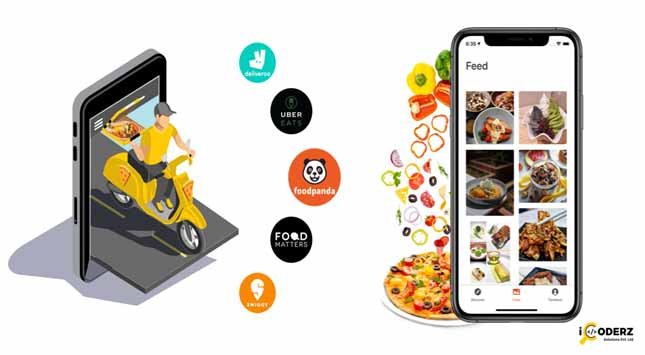Creating an app from scratch can seem like an impossible task, especially if you don’t have previous experience with software development or web design. But it’s easier than you think to make your app – and in 10 easy steps!
Here’s how to create an app that will generate buzz and attention among potential clients, fans, and users. Even if you’re just starting in the digital world.
Step 1 – Think About Your Audience
For you to make money as a paid app, you’ll need users. Your product needs people willing to pay for it, and it’s a lot easier when they already know and trust your brand.
This is where doing some research comes into play before you start building your product, and identify who your potential users are. Think about their age range, interests, occupation, and other demographic factors that might be relevant to what kind of content they’re interested in.
Step 2 – Research & Brainstorming
Now that you know what kind of business you want to start, it’s time to figure out how you want your product or service to look and function. What will people be using it for? What problems will it solve? Who are your competitors and how do they go about solving those problems?
This step is all about research not just any research. Start by writing down every problem that exists within your industry, then think of a way that you could solve each one. Then, do some quick competitor research and see how these startups are going about tackling those issues.
Make a list of features that make your product unique: which features might potential customers be willing to pay extra for? How does your offering improve upon currently available solutions?
Step 3 – Decide on a Niche
There are several ways you can decide what your niche will be. You can look at your interests and find a niche that matches, or you can base it on popular ideas. Once you’ve decided on something, research if there is enough of a market for that particular idea, or if people even like it.
This is important because many ideas tend to be overly broad, which won’t get very many users and doesn’t allow for much monetization. Another option is instead of creating a new niche entirely, you can look for niches that are not saturated with apps yet so you have a better chance at competing without too much competition. Make sure whatever idea you choose is something users enjoy and would find useful.
Step 4 – Outline the App’s Features
Before you start coding, take a moment to outline your mobile app’s key features. It will help you get a better understanding of what your end goal is and therefore how to best plan your development. You should start with a broad list of basic features, and then move on to more specific ones.
For example, if one of your features is Facebook login, make sure you add Facebook as part of that feature rather than having it stand alone as its feature! That way it’ll be easier to track what can be removed or altered later on down the line based on changes in requirements or feedback. This will save time and money when going through the testing and development stages.
Step 5 – Start Building Your App
Now that you’ve thought things through and gotten a feel for how your app might work, it’s time to start building it.
There are several ways you can do so, including using drag-and-drop functionality within software like AppMakr or WeBuilder. Both of these options allow you to build what they call low-fidelity apps, which means they won’t be as well designed or interactive as something that was built with a specific programming language (or high fidelity).
However, using either method will give you a really solid idea of how well your concept works and whether there are any major problems. In app development, there can be lots of options for platform selection like Flutter or React Native these platforms are used to Develop a responsive app.
Step 6 – Final Steps Before Launch
Your App is Now Finished! You’ve finished all of your wireframing, prototyping, and mockup design. You’ve added every single feature that you need for launch and then some. If you’re launching on Android or Apple there are still a few things that you should do before releasing your product into the wild.
Step 7 – Launching your App
Don’t let your iPhone and iPad apps collect digital dust on your device. Don’t assume that because you have a new app, everyone will magically know about it. Put it out there for others to see by using popular social media platforms, reaching out to bloggers and creating a list of potential users and reviewers who could help spread awareness.
Most importantly, don’t put all your eggs in one basket. Submit your apps to as many third-party marketplaces as possible: iTunes App Store/Google Play/BlackBerry World are just a few places you should submit them so they can be downloaded or streamed directly onto people’s devices.
Step 8 – Listening to Feedback & Updates
The development world is always changing. New languages and frameworks are being introduced all of the time, with new versions arriving regularly. It can be hard to keep up with it all, but take heart that’s why there are online forums and developer meetups everywhere!
Get out there and meet some other people who share your interests. Check out our learning resources section below for a list of places you can go to pick up more knowledge and stay updated on changes as they happen. Good luck!
Step 9 – Monetize your App
If you’re not monetizing your app, you’re not making money off of it. One simple way is to include a prominent ad along one edge of your game. Another option is to incorporate ads into your free version, and then provide a paid premium version that has no ads and more content.
You can even experiment with pay-per-download models where users can download full versions for a fee. There are several different ways you can go about doing it, but it’s up to you to test what works best for your audience. If users aren’t paying for your application, why would they ever recommend it? You have nothing invested so put at least as much time into marketing as you do development; if not more!
Step 10 – Keep Learning (and Loving!) Development!
The only way you’ll ever become a great developer is if you continue learning new programming languages and techniques. There’s no better time than now, when you’re just starting, to make sure that development remains a lifelong pursuit.
Whether it’s on your lunch break or during your free time at home, keep pursuing new areas of interest and improve upon what you already know. It’ll make becoming an expert that much easier. Good luck! And happy coding!






